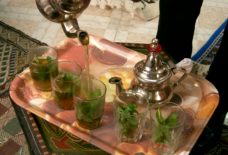9/11 Memorial Museum Makes it Clear Arabs are Not Welcome
The September 11 Memorial Museum will not open its doors until April of 2014, but is already sending out signs that some are more welcome than others. As Raed Jarrar, communications director for the Arab-American Anti Discrimination Committee (ADC), points out, while museum brochures will be available in the nine languages that are said to be “spoken by over 97 percent of our visitors” (English, Spanish, German, French, Portuguese, Mandarin, Italian, Japanese and Russian), they will not be available in Arabic.
As Jarrar underscores in Al-Jazeera, ”the lack of Arabic brochures and the apparent exclusion of Arab-American history suggests a pattern of discrimination towards Arabs and Arab-Americans.”
9/11 Memorial Museum Fails to Include Little Syria
Such a “pattern of discrimination” is also evident in the exhibits planned for the museum which do not mention that, not even 100 years ago, the very commercial district where the new September 11 Memorial Museum will be located was the home to the largest Arab community in the West. Starting in the 1880s, immigrants from present-day Syria, Lebanon, Jordan and Palestine settled in lower Manhattan and built a vibrant community of stores selling dried goods, jewelry and textiles. Over time, the area became known as Little Syria.
The construction of the Brooklyn-Battery Tunnel in the 1940s and of the World Trade Center itself in the 1960s led to the destruction of most of Little Syria. Families moved to other parts of New York and around the country. Now, only three buildings remain; a campaign called Save Washington Street is fighting to preserve them and to have a permanent exhibit about Little Syria in the September 11 Memorial Museum.
September 11 Memorial Museum spokesman Michael Frazier tells Al Jazeera that the “museum had offered to include an oral history of Little Syria in a temporary exhibit that would run only for a few months.” But no artifacts from the historic Arab community or even a mention of it are currently included in the museum’s permanent exhibits.
Given that the stated purpose of the September 11 Memorial Museum is to “showcase the history of the World Trade Center site,” the exclusion of Little Syria is a glaring oversight. Sarab al-Jijakli, president of the Network of Arab-American Professionals, also says that the failure to mention Little Syria is discriminatory and all the more by a museum that has been financed with some $300 million in taxpayer-funded grants:
“The decision to exclude any mention of ‘Little Syria’ in the permanent historical exhibit is problematic, as it omits an important historical fact that all New Yorkers should be made aware of and, intentionally or not, adds to the ongoing marginalisation of Arab-Americans by erasing the community’s history and role in helping build this great city.”
The absence of an Arabic language brochure for the museum and of Little Syria in its exhibits “bring back memories from the initial weeks and months following the September 11 attacks,” when many Arab-Americans, including those who were second and third generation, found themselves subject to “personal and violent attacks” and, certainly, suspicion and surveillance.
Remembering Salman Hamdani Who Died in the Attacks on 9/11
Plans to build a mosque and Islamic center two blocks from the Ground Zero site have generated plenty of controversy. What so many are forgetting, or rather choosing to overlook, is that hundreds of Muslim families were among those who lost loved ones in the attacks on September 11. Some 60 of the nearly 3,000 killed were Muslim, including Pakistan-born Salman Hamdani.
After leaving his family’s home in Bayside in Queens on the morning of September 11, Hamdani saw the twin towers burning. As an EMT and a member of the New York City Police Department’s cadet program, he was able to go downtown to the site. Hamdani did not return home as the days passed and his family searched frantically for him. Flyers with his picture were ripped down, the police questioned his family about Hamdani’s politics and the New York Post ran a story about him with the headline “Missing — or Hiding?”
Not until March of 2002 did his family know his fate, when two policemen told his parents they had found his remains in the north tower.
Salman Hamdani must surely be remembered as a victim of 9/11 as must Little Syria and the community and lives of Arab-Americans who once lived there alongside “Greeks, Turks, Armenians, Slovaks, Poles, Hungarians, Lithuanians, Ukrainians, Czechs, and Irish.” Not including permanent mention of Little Syria and its diverse residents in the September 11 Memorial Museum undermines the very purpose of the museum, which is to, in the words of its director, Alice M. Greenwald, “honor memory and in doing so to educate for a better future.” Not making brochures available in Arabic, the fourth most-spoken language in the world, is an at least troubling oversight.
Tell the September 11 Memorial Museum <a href=”http://www.thepetitionsite.com/216/631/522/tell-the-september-11-memorial-museum-to-have-brochures-in-arabic/”>to make brochures written in Arabic available.</a>
Kristina Chew
Care2 Make A Difference



